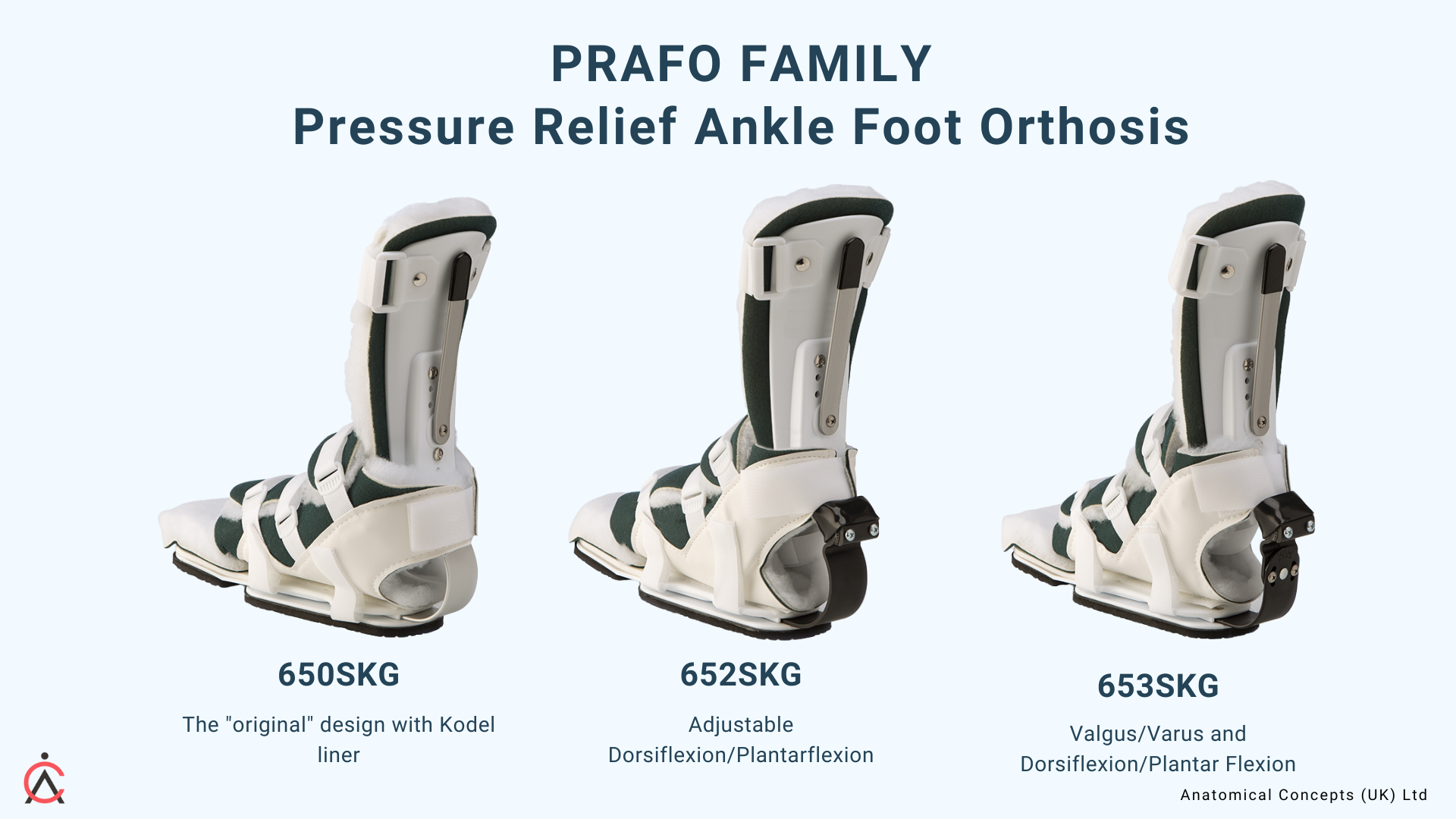Which PRAFO design should I choose?
The original Pressure Relief Ankle Foot Orthosis (PRAFO) design remains one of our most popular versions. As you will see on this site there are a familiy of products to suit adults, children and special cases such as Bariatric and infant designs. In addition there are liner and strap configurations to suit many cinical applications. The most fundamental aspect of the PRAFO designs is their adjustability so let’s go back to the origins of the PRAFO range.
The original PRAFO design is still with us. Designated the 650SKG, this is the choice to make when you wish to prevent heel ulcers in a recumbent patient or a patient with compromised mobility.
The 650, 652 and 653SKG orthosis designs offering adjustment options
The 650SKG retains all the features that have made it successful since the 1990’s and is still a good choice in many situations. Featuring an adjustable foot and calf section, a replaceable Kodel liner, intrinsic walking base and the ability to use on a left or right foot are valuable features.
A critical benefit of all the PRAFO designs is the use of the aluminium upright structure. This use of a metal upright is not seen with rival products but is critical in many situations. For example, post-stroke it is common for high tone to result in high plantar flexion forces. A plastic AFO would tend to distort - resulting in high pressures on the plantar surface of the foot which can lead to pressure ulcers. In addition, the heel area can be placed at risk. The 650SKG can resist these pressures and maintain clinical efficacy whether the patient is immobile and recumbent or ambulent.
What if the patient already has a foot and ankle anomaly that needs to be accomodated?
View fullsize
The 652SKG featuring easily adjustment of dorsiflexion angles
This is where the PRAFO has evolved to make life easier for the clinician. The original 650SKG structure has the ankle angle set at 90 degrees and in order to accommodate a patient with an existing plantarflexion deformity the upright structure would need to be bent with special tools. To make plantarflexion/dorsiflexion adjustment much easier, the 652SKG (APU - anterior posterior upright) version was created.
This design provides the clinician with a more precise, simplified, and calibrated method of setting the optimal dorsi/plantar flexion angle.
This setting of the optimal angle is done by simply loosening the two adjustment screws, repositioning and then retightening the screws.
This design retains all the features of the 650SKG but allows this frequent adjustment to be made without the need for special tools.
The 653SKG (DUAL ACTION AFO) takes this idea even further to accomodate valgus/varus anomalies in addition to the plantarflexion accomodation provided by the 652SKG. The design has an additional pair of set screws that allow this adjustment as shown by the short videos below.
Whichever version of PRAFO you choose you can be sure that the design and materials are first class and have been tried and tested in hundreds of thousands of cases since the 1990s.


